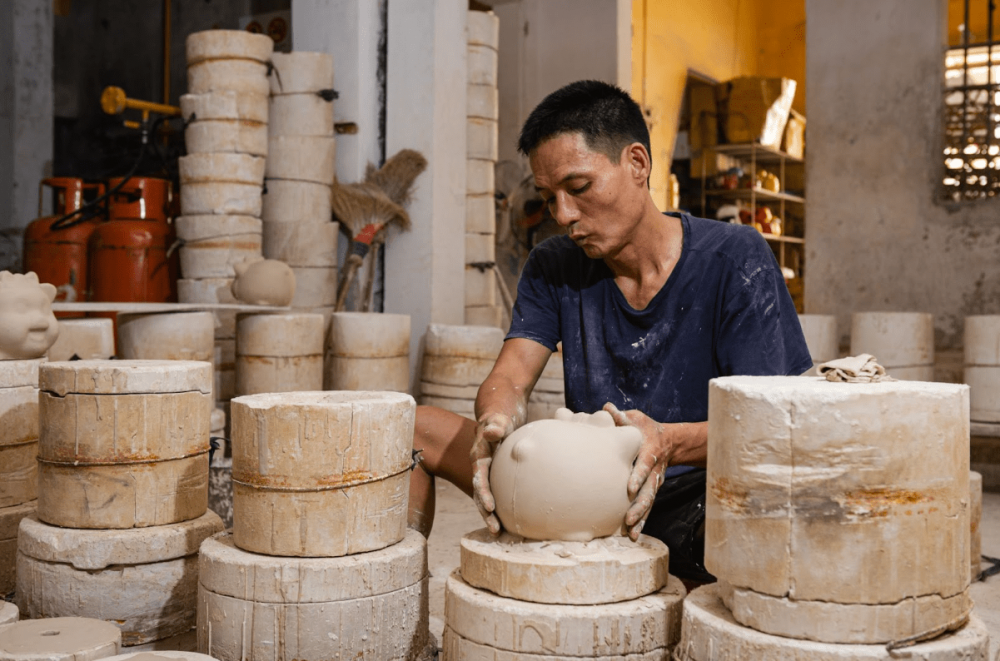
Traditional craft villages are an inseparable part of the cultural identity of many localities in Vietnam. From Bat Trang ceramics, Tan Chau silk, and Dong Ky woodwork to Phu Quoc fish sauce and Hue conical hats, each product embodies the essence of a region and the nation's history. However, in this era of globalization and fierce competition, such traditional values can easily fade if they are not preserved and innovated. That is why more and more craft villages are turning to technology—especially digital transformation—as a way to revive and enhance the competitiveness of their unique local products.
Digital transformation in craft villages is not simply about putting products online to sell. It is a comprehensive process that includes digitizing production processes, applying management software, building digital brands, and, most importantly, connecting with global markets through technology platforms. Integrating modern digital tools into traditional workflows helps improve quality, reduce costs, and preserve the uniqueness of the products while still meeting the tastes of modern consumers.
A vivid example is the transformation of the Tan Chau silk village in An Giang. In the past, the Lanh My A silk—dyed with mac nua fruit—was mainly consumed locally or sold to tourists. But by adopting 3D printing technology to design patterns and using fashion design software along with virtual modeling, artisans and local businesses have been able to showcase Lanh My A silk collections on international fashion runways without transporting bulky samples. As a result, the products have reached international designers, increased orders, and elevated their value.
A key element in digital transformation is the ability to trace origins and tell the story of a product. For handicrafts and regional specialties, each ceramic vase or bottle of fish sauce is not just an item—it represents a cultural narrative, history, and crafting technique. Digital applications enable the attachment of QR codes to each product; when scanned, they display videos, images, maps, and detailed information about the production process, the maker, and even personal stories from the artisans. This helps customers appreciate the real value behind the product, increasing trust and willingness to pay higher prices.
Digital transformation also expands sales channels for craft villages. Listing products on e-commerce platforms like Shopee, Lazada, Tiki, or international sites such as Amazon, Etsy, and Alibaba allows access to customers previously out of reach. However, doing this successfully requires technical support, guidance on packaging standards, image requirements, and skills in online customer service. Training programs organized by the government or tech enterprises play a vital role, especially for older artisans or small-scale producers.
Another important change is the use of management software for orders, inventory, and finances. Many craft villages operate as household businesses, with manual and unsystematic tracking of production, delivery, and cash flow. With software, all information is stored and analyzed, helping producers plan better, control quality, and adjust output based on market demand. This reduces risk, increases productivity, and lays the foundation for participation in larger supply chains.
However, digital transformation also poses significant challenges. The first is mindset. Many artisans are still accustomed to traditional methods and are unfamiliar or hesitant to embrace technology. Some even fear losing their craft if machines replace their skills. In reality, digital transformation does not mean abandoning tradition—it is a way to preserve and develop it in a new form. Technology does not replace people; it empowers them to work more efficiently and creatively.
Cost and human resources are also major barriers. Most craft villages lack the capital to invest in technology and do not have specialized technical staff. Therefore, government support policies are needed, such as preferential loans, subsidies for management software, and free online sales platforms for craft villages during the initial stages of digital transformation. At the same time, a network of technology advisors should be established to provide guidance and ongoing support.
Digital transformation is an inevitable trend in the context of globalization and technological advancement. For local specialty products—rich in cultural identity—digital technology is the “storyteller” that helps convey their value to the world. When each ao dai, bottle of fish sauce, or handwoven basket is digitally identified, carrying its story, process, and transparency, that is when local products confidently step out of the "village pond" and into the global arena with pride and authenticity.
Ngày đăng: 07-06-2025
Tác giả: Kim Anh

